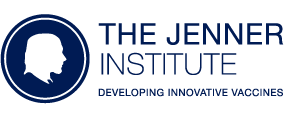Outbreak Pathogens: New Rift Valley Fever Vaccine Programme
By Dr George Warimwe, Jenner Institute/KEMRI-WTRP Kilifi, Kenya
 Rift Valley Fever virus (RVFV) is an emerging global health threat prioritised for vaccine research and development by the World Health Organization, the US National Institute of Allergy and Infectious Diseases and the UK Vaccine R&D Network. Although primarily restricted to Africa and the Arabian Peninsula, it can be transmitted by numerous mosquito species (including the Aedes species) that are more widely distributed than the virus currently is, leading to concerns of further disease spread.
Rift Valley Fever virus (RVFV) is an emerging global health threat prioritised for vaccine research and development by the World Health Organization, the US National Institute of Allergy and Infectious Diseases and the UK Vaccine R&D Network. Although primarily restricted to Africa and the Arabian Peninsula, it can be transmitted by numerous mosquito species (including the Aedes species) that are more widely distributed than the virus currently is, leading to concerns of further disease spread.
Sheep, goats, cattle and camels are highly susceptible to RVFV infection, which causes high rates (>90%) of mortality and abortion. Virus amplification in infected animals often precedes spillover of disease into humans through infectious mosquito bites and contact with RVFV-contaminated tissues and fluid. Human disease presents as an acute self-limiting febrile illness, but severe manifestations, including haemorrhagic fever and encephalitis, also occur, with case fatality rates >30% reported in some outbreaks, and long-term sequelae (e.g. impaired vision) in some survivors.
No licensed vaccines are currently available for humans and the live RVFV vaccines widely used for livestock in Africa have major drawbacks, including residual virulence, need for high containment during production, and variable immunogenicity. The use of these whole RVFV livestock vaccines furthermore makes it impossible to differentiate infected from vaccinated animals (DIVA) since the antibody profile in both groups of animals is similar.
To address these unmet vaccine needs we have developed ChAdOx1-GnGc, a novel candidate vaccine utilising a replication-deficient chimpanzee adenovirus vaccine platform an established human safety profile. ChAdOx1-GnGc is DIVA-compatible; it only encodes the RVFV envelope glycoproteins and hence does not elicit immune responses to other RVFV antigens incorporated into commercially available DIVA kits. Singledose immunisation with ChAdOx1-GnGc alone provides 100% protection against RVFV challenge in sheep, goats and cattle, and is as immunogenic as the most widely used licensed livestock RVFV vaccine in Africa (Smithburn vaccine). In addition, ChAdOx1-GnGc also elicits protective levels of RVFV neutralising antibody in camels. Together these promising data underscore the potency of the ChAdOx1 vaccine platform in the most important domestic animals in Africa and strongly support further evaluation of ChAdOx1-GnGc in human clinical trials.
To this end, we have recently received two awards from the UK Vaccine R&D Network to support this exciting One Health programme in which the same GMP manufactured batch of ChAdOx1-GnGc vaccine will be tested in parallel in humans and livestock in East Africa. The first award, through the UK Biotechnology and Biological Sciences Research Council (BBSRC), will fund safety and efficacy studies in The Pirbright Institute high containment facilities and large field trials of the vaccine in sheep, goats, cattle and camels in Kenya, in collaboration with the International Livestock Research Institute. The second award, through the Medical Research Council, will support phase I clinical trials in Oxford and thereafter in Uganda, in collaboration with the MRC/UVRI Uganda Research Unit on AIDS in Entebbe.
This work, which has exploited synergies in human and veterinary vaccinology, will likely provide for the first time a vaccine that can be deployed against the same pathogen in both humans and multiple diverse livestock species.

